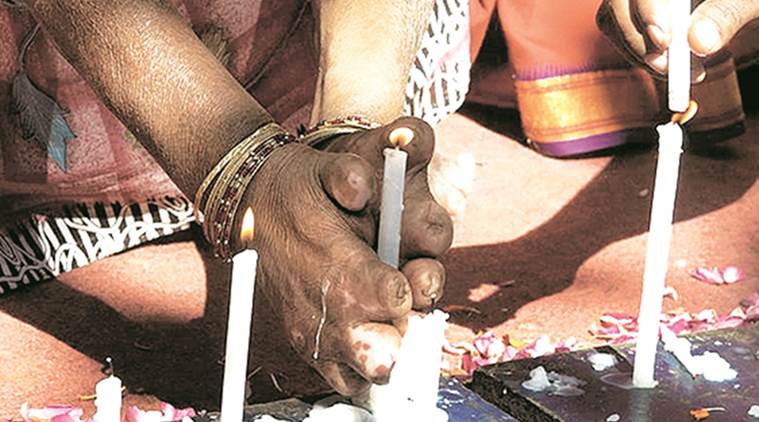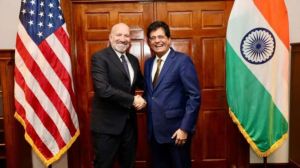Stay updated with the latest - Click here to follow us on Instagram
Maharashtra: 16,065 leprosy cases in 2017-18, state government plans two screening drives
In 2014-15, 2,045 children and in 2015-16, 1,764 children were diagnosed with the disease. This year, the number has dipped to 1,624.
 The members of Scheduled Castes account for 13.7 per cent of the total leprosy pool, with maximum detected with multibacillary. Archive
The members of Scheduled Castes account for 13.7 per cent of the total leprosy pool, with maximum detected with multibacillary. Archive
THE LATEST data from the state health department has recorded 16,065 new leprosy patients in Maharashtra in 2017-18, of which at least 10.11 per cent are children — indicative that the transmission remains active and younger children need to be detected faster to treat the infectious disease.
Maharashtra has the third highest leprosy population in India. Caused by mycobacterium laprae, the disease damages nervous system causing skin lesions, numbness and disfigurement. What has concerned officials is patients being continuously diagnosed in advanced phase of the disease. In 2017-18, 444 patients have been diagnosed with grade II disability and 737 with grade I disability. “In grade I disability, a patient develops loss of sensation, which is not visible to the eye. Grade II advances to physical deformity,” said Dr Ramji Adkekar, state in-charge of National Leprosy Eradication Programme. In 2015-16, 397 patients were diagnosed with grade II disability.
The government now plans to conduct two screening campaigns across all districts to detect leprosy patients. “Last year, we conducted screening in 22 districts. This year, the entire state will be covered to further cut transmission and bring disease incidence down,” said Adkekar. The burden of multibacillary, where more than five skin lesions are found on body and the patient has entered an advanced stage, accounts for 53 per cent (8,601) of the total leprosy patient pool in Maharashtra. Patients with initial symptoms of leprosy, called paucibacillary, where less than five skin lesions are found, stands at 7,264 (47 per cent). “What we need are more screening drives and early detection. Several patients are detected in advanced stages, by then they have infected others and their treatment becomes difficult,” said Dr V V Pai, attached with Bombay Leprosy Project. Last week, health experts and government officials had met in Pune to discuss the need for detecting multi-bacillary patients to cut down transmission. The highest burden of leprosy is in Palghar, Gadchiroli, Thane rural, Chandrapur, Gondia and Nagpur.
Maharashtra, along with India, was declared leprosy free in 2005 with incidence of patient falling below one per 10,000 population. Renewed drives to detect the disease found a high incidence, with Bihar accounting for maximum cases followed by Uttar Pradesh and Maharashtra.
Records show that there is slight reduction in children detected with leprosy — from 11 per cent to 10.11 per cent — from 2016-17 to 2017-18 in the state. In 2014-15, 2,045 children and in 2015-16, 1,764 children were diagnosed with the disease. This year, the number has dipped to 1,624. The members of Scheduled Castes account for 13.7 per cent of the total leprosy pool, with maximum detected with multibacillary.







